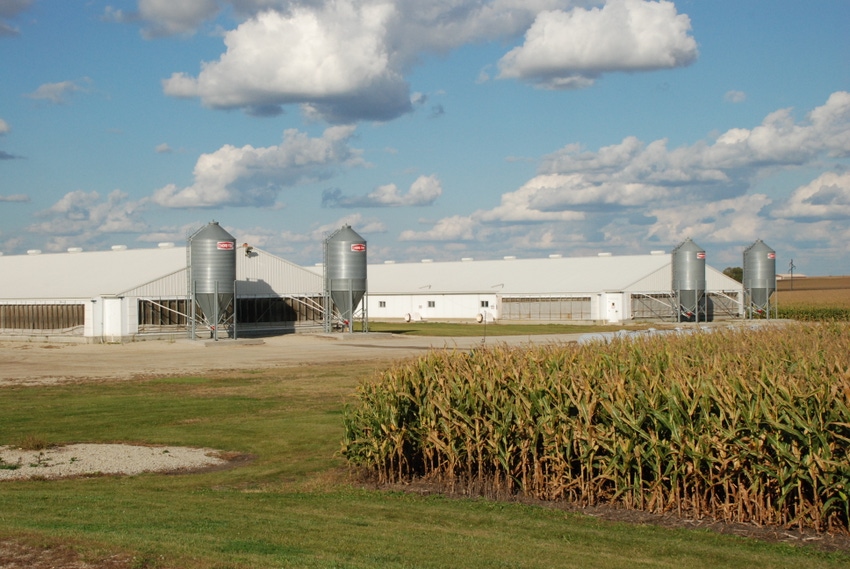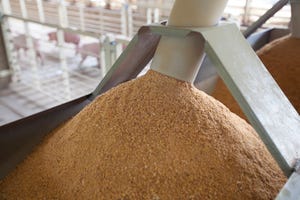
The U.S. Department of Agriculture (USDA) recently announced it has revised its national conservation practice standard on nutrient management in order to help producers better manage the application of nutrients on agricultural land. The inclusion of a “4R” Nutrient Stewardship plan calling for the right nutrient source at the right rate, the right time, and in the right place was applauded by organizations such as the Fertilizer Institute (TFI).
The nutrient management conservation practice is an important tool in USDA’s Natural Resources Conservation Service (NRCS) conservation toolbox. The agency’s staff uses this conservation practice to help farmers and ranchers apply their nutrients more efficiently. Proper management of nitrogen and phosphorus, including use of manure, legumes and cover crops can save producers money. The nutrient management standard provides a roadmap for NRCS staff and others to help producers apply available nutrient sources in the right amount, from the right source, in the right place, at the right time for maximum agricultural and environmental benefits.
TFI says 4R Nutrient Stewardship is an innovative and science-based approach to fertilizer best management practices (BMPs) to help achieve agricultural sustainability. The 4Rs imply there are four aspects to every fertilizer application and provide a simple framework to assess whether a given crop has access to the necessary nutrients. Asking if the crop was given the right source at the right rate, right time and in the right place helps identify opportunities to improve fertilizer efficiency and prevent nutrient movement from each field. The four aspects of this system for fertilizer management are interconnected and none of the four can be right when any one of them is wrong.
“We are extremely pleased with USDA/NRCS’ call for 4R nutrient stewardship as part of a sustainable agricultural system,” says Ford West, TFI president. “Agriculture is being asked to maintain profitable farm economics, while meeting the increased product demands of a growing population and responding to increased scrutiny of land and resource management, and the 4Rs are key to addressing the challenge.”
NRCS nutrient management experts worked with universities, non-government organizations, industry and others to revise the standard to ensure it is scientifically sound. Key changes in the standard include expanding the use of technology to streamline the nutrient management process and allowing states more flexibility in providing site-specific nutrient management planning using local information when working with producers. NRCS staff offices will have until Jan. 1, 2013 to comply with erosion, nitrogen and phosphorus criteria for their state nutrient management standard.
The revised national standard is being released at a time when the agency is working with various partners to address nutrient management concerns identified in three recently released Conservation Effects Assessment Project (CEAP) cropland studies. These CEAP studies assessed the effectiveness of conservation practices in the Upper Mississippi Basin, the Chesapeake Bay Watershed and the Great Lakes Basin. One significant resource concern identified in all three studies is the loss of nitrogen and phosphorus from cropland. Most nitrogen losses are attributed to nitrate leaching through the soil to groundwater. Most phosphorus is lost due to erosion because phosphorus attaches itself to displaced soil particles that are transported by runoff to nearby waterways. Improved nutrient management and effective erosion control work together to reduce the loss of nutrients from agricultural land, resulting in improved water quality in downstream rural and urban communities. The revised standard will provide tools and strategies to help producers address the natural resource concerns relating to excess nutrients on agricultural land.
NRCS offers voluntary technical and financial assistance to producers nationwide for planning and implementing on-farm nutrient management plans. Producers can use this assistance to help meet federal, state, tribal and local environmental regulations.
The USDA-NRCS Web site contains more information about nutrient management planning and standards at http://www.nrcs.usda.gov/wps/portal/nrcs/main/national/landuse/crops/npm.
About the Author(s)
You May Also Like



